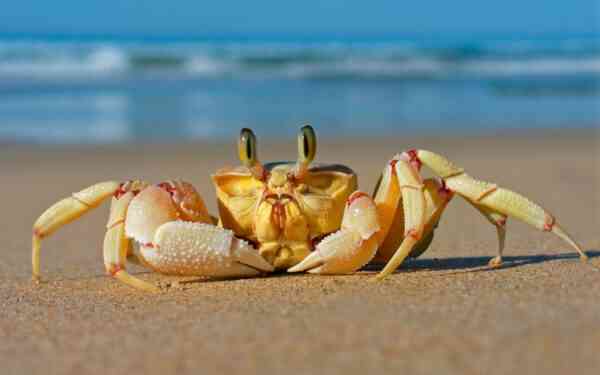Disputes about who are the most ancient inhabitants of the Earth have been going on for a long time. Crabs, for example, do not claim exclusive superiority, but they still found dinosaurs, and over the past eras have changed very little. And why should they change? Evolution has made them perfectly adapted to life and reproduction.
Interesting facts about crabs
- Crabs appeared on Earth more than 200 million years ago – scientists have discovered their remains dating back to the Jurassic period. It is possible that their primitive ancestor crawled the planet 360 million years ago, but this theory has not yet been fully proven.
- They can grow to huge sizes – for example, a species of spider crabs that lives off the coast of Japan, with an almost four-meter leg span, can weigh up to 19 kg.
- The earth is inhabited by more than 6780 species of crabs.
- The king crab is not actually a crab, but a hermit crab that looks like a crab.
- Crabs make up more than 20% of the total marine crustaceans that are caught, farmed and traded each year. This is about 1.5 million tons per year.
- Alone, they can easily get out of the bucket and escape into the wild, but if there are several of them, the escape is doomed to failure – other crabs will grab a brother who has approached freedom and interfere with him with all their might.
- When he first saw a cancerous tumor, Hippocrates called it a “crab”, since its shape resembled the shell of a crustacean, and the veins extending from it were its many legs. Then the Roman physicians translated the Greek word “crab” into Latin, and began to designate the disease with the term “cancer”. In English, this deadly disease is still called that way.
- Crab bodies are inhabited by the parasite sacculina, which has almost no internal organs. It inserts itself into the body of a host crab, uses its body to support its life, and then lays eggs and places them in a pouch under the crab’s abdomen. Female crabs bear them as their own, losing the ability to reproduce, and male crabs are chemically castrated by parasites, and they begin to behave like females.
- For self-defense, boxer crabs carry poisonous sea anemones with them, which, if necessary, can be launched at the enemy.
- Yeti crabs, living several thousand meters below the surface of the ocean, feed on bacteria that they cultivate on their own shells. They approach the cracks from which methane and sulfur compounds come to the surface, since such places are saturated with bacteria. The crabs then help them reproduce by exposing their claws to chemical-laden streams of water in a dance-like act (interesting facts about bacteria).
- Crabs live off the Japanese coast, on the shell of which a pattern flaunts, very similar to the face of an angry samurai. Scientists believe that this species grew thanks to fishermen who released crabs with such shells back into the sea – ordinary people considered them to be the souls of dead warriors. Their counterparts with ordinary shells were less lucky, so over time, all representatives of the species acquired a pattern on the back.
- One claw of male alluring crabs is much larger than the other – it is to this huge limb that the species owes its name, since crabs lure females with its help. If the male loses a large claw in a fight with an opponent, then he grows a new one in its place – weaker, but superior in size to the lost one.
- Crabs can stay on land for a long time, but they still breathe oxygen from the water accumulated in the gills.
